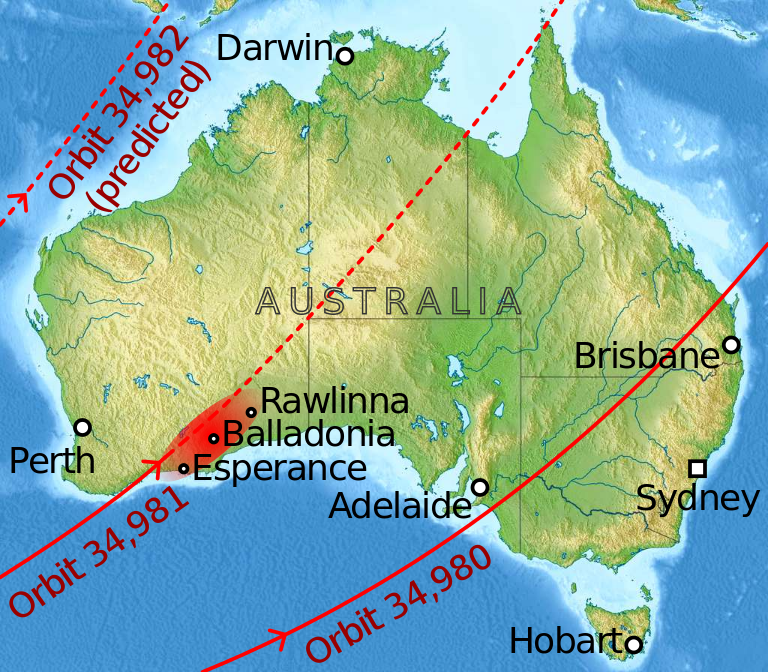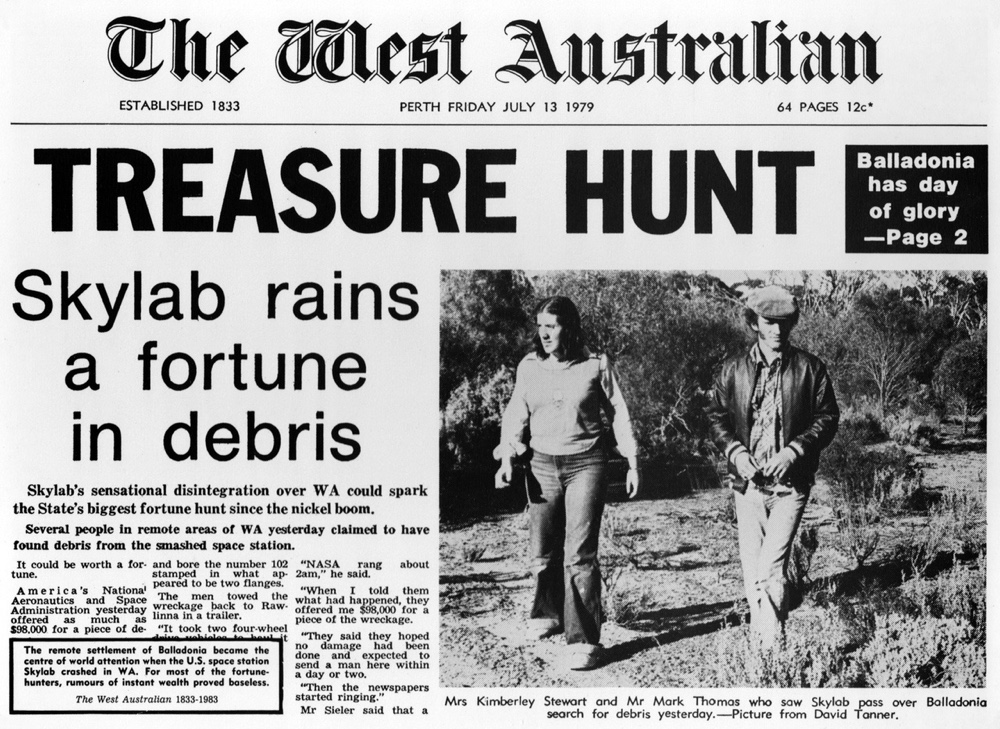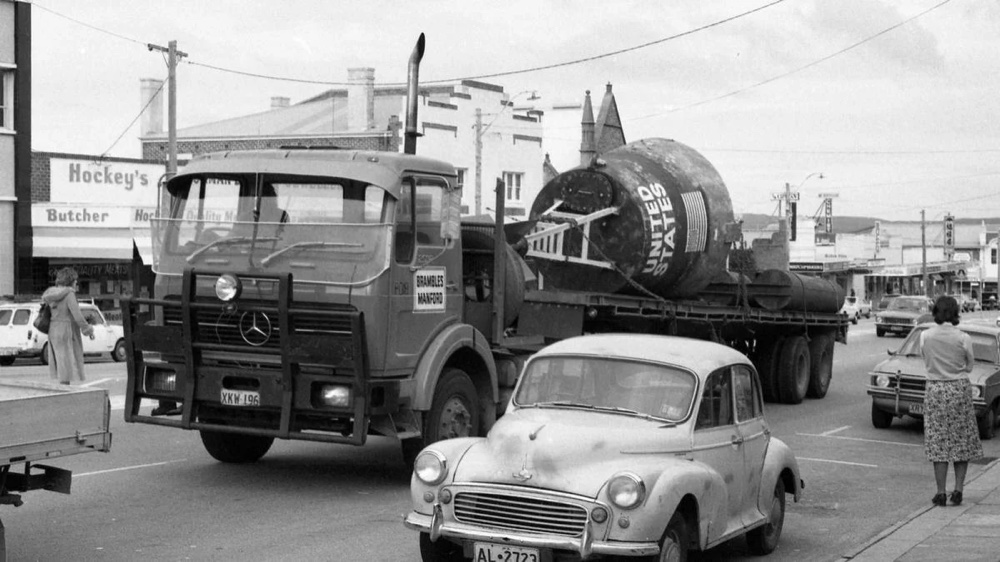The first record shop I remember was at Garden City. I believe it was called Sound World, and it was there I bought my first vinyl 7″ record (which I still own today) when I was ten years old. It was a retail store in a shopping center, which meant it was clean and not-scary for a little tyke like myself, and I loved it. I used to flip through the records almost at random, entranced by the cover art. I sometimes asked the clerk to put a particular single on, since this was pre-muzak and shops usually played their own records over the PA. I collected the weekly singles charts (which were nicely printed for people to take) and often looked at but never actually bought a poster. I always wanted the large poster of the album cover art for Borrowed Time by Diamond Head, and was surprised when many years later I visited a friends house (MS) for the first time and saw it on his wall!

Since we frequented Garden City I seemed to visit Sound World almost weekly, and many of my early purchases were made there. I had a brief flirtation with 7″ vinyl, but when Bernard and I got tape players for Christmas in early 198X we both switched to cassettes. I bought lots of then, mostly with my paper route money. Looking back, it feels like that’s what almost all my money went on! Around 1984 I discovered the ability to order records from catalogues, and this opened up my world in unimaginable ways. I learned there were other records even beyond what was stocked in the shop, and never looked back. In that year I ordered Forever Young (the album) by Alphaville from the David Jones record counter and when it arrived it changed my life.
Ordering music became routine, and much of my mid to early Depeche Mode collection – which is downstairs in this house right now – was obtained via ordering since often the shops wouldn’t stock it by default. Sometimes I felt I knew more about using the ordering system that the clerks that worked in the stores, and looking back on it – writing numbers on little pieces of paper torn out of a ticket book and waiting for them to call to say it’s in stock – it seems very quaint. But it worked, and I loved it.

As I grew older I found stores further afield, and by my middle teenage years Bernard and I would regularly hit the ones in the Newcastle CBD. I don’t recall the names now, but I remember them older and dirtier and more mysterious than my mall haunts. They’d have records that seemed to go back to when my parents were kids, and the posters on the walls suggested times long past. But often they also had more eclectic selections, and when I got into new wave and – particularly notable for me – UK import stuff, these were the stores I kept returning to.
When dad went to Germany in the 1980s I asked him to bring me back some Alphaville singles (which I couldn’t even order in Australia) and he succeeded in spades bringing back a trove of them. Even better was that he’d kept the packaging – for a store called Saturn in Hamburg – and he had also picked up an encyclopedia catalogue. I was absolutely astonished by the minute print in the page after page of listings (all in German of course) and used to dream of visiting the place! I think we entertained the idea of even trying to order something from the catalogue, but never actually did.
When I was about 16 or 17 there was a little shop on Hunter Street hidden in a small arcade that was a good place to pick up singles and (in later years) CD singles, and was often my go-to for the latest Depeche Mode or Erasure releases. There was a tiny cafe next door that sold good sausage rolls, and I’d often spend time looking through the records then stopping for a roll and a coke, eating it on a flimsy table outside next to the glass storefront while looking through my purchases. I recall one of the clerks one time calling me ‘captain’ when I bought something, because I was in uniform and had my captains badge on. Looking back on that shop it seems the owner must have had music tastes similar to mine, since it carried very different music than the typical store in those days. It closed before I left Australia though, and I recall being disappointed the day I stopped by to find it gone.

It was around that age when I took my first solo day trip to Sydney for shopping. If I go to a city now (say New York) just for shopping, music doesn’t even enter the equation, but in those days the trips were exclusively for record shopping! There were a great many very specialized stores in the Sydney CBD and I used to hit them all. At first it was Redeye, Phantom and Waterfront, but toward the early 1990s Metropolis, Galaxy and Underground (and occasionally Utopia) were added to my schedule. These were all heaven for collectors like myself: places where you’d actually see the latest variant 7″ or 12″ releases by my favourite bands (in original sleeves!) not to mention the records covered in NME. It was in these stores that I bought most of the Nick Cave, Depeche Mode, Erasure and Sisters of Mercy vinyl I still own today. Every trip I’d buy enough that I could barely carry it, and my day would be endless visits to record stores punctuated by McDonalds and the obligatory stops in the arcades on George Street.
In fact it was in Redeye that – on a whim – I bought a record by a band I’d never heard of based on the cover art alone. That purchase of Dawnrazor by Fields of The Nephilim back in 1987 probably changed my life as well. In 1989 I was in a Sydney record shop (with SMC) the moment the earthquake hit Newcastle, which was another pivotal event in my life.
I went to Sydney very often in the late 1980s and early 1990s; probably once a month. The train was free for me in those days, and I loved the ride as much as the shopping. Sometimes Bernard came too, or I went with friends, or I met a friend down there (the mysterious CRS, who probably deserves her own blog post one day…). I apologize if you ever came with me and was bored/exhausted as I dragged you around endless record shops for 12 hours!

Used record shops were another favourite of mine, and Rices on Hunter Street was a popular stop after school back in the SFX days. It was an incredible location for vinyl and CDs (and books) and almost impossible to go into without walking out with some treasure. I feel it was the first used record shop I ever visited, which is extraordinary considering how great it was. But in Sydney as you walked toward to the CBD from Central Station you walked right past two stores – Lawsons and Ashwoods – that made Rices look like a hole in the wall. These places were always dense with people and had an incredible diversity of books and records that seemed to completely change every time I visited. I remember they were hot and smelled of old paper, and it was often frustrating trying to find order in the seemingly chaotic sorting. But I persisted, and many times I’d find something I was interested in and hide it so I could pick it up on the way back to the station at the end of the day 🙂

In an indirect way, KLS and I met over records. We were both collectors, and discovered each other via a record collecting message board for a particular band. When she visited Australia back in the 20th century I took her to all my usual haunts and I don’t even think she was bored (based on the fact she later agreed to marry me)! One of my favourite record shop anecdotes is from that trip: KLS and I were resting our legs on a long bench outside Metropolis, which was a dance/alternative store in a Sydney underground arcade, reading through a free entertainment newspaper. The back cover was an advert for a Right Said Fred concert, and when I glanced at the guy sitting next to me on the bench I was astonished to notice it was a guy from the band! He looked at me, and then at the advert, gave me a massive smile, and walked away. Not a word was said 🙂
Even when I came to America I used to frequent record shops, albeit mall ones in those days. By then they sold movies as well, and the size of the stores dwarfed the ones I was used to from my youth, and I loved visiting them and browsing the stacks. But record shops were famously one of the earliest victims of the changes the internet brought the world, and by the early 00’s were all but dead in the USA. In a very short time they closed in all the malls, and then everywhere. Standalone music shops were suddenly gone, and the joy of browsing the new releases or the used bins went with them. The vinyl resurgence has caused things to change a bit in the last decade, and some stores have returned, but I still think the days of a record shop in every mall are lost to history
So many happy memories of times spent in record shops. Is it the same for you?





